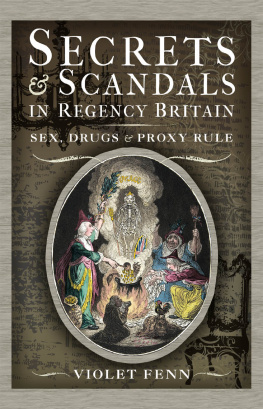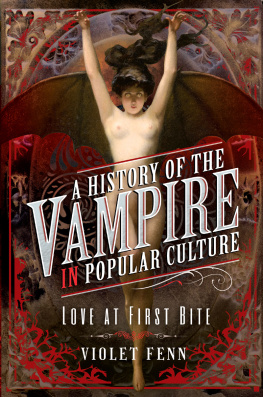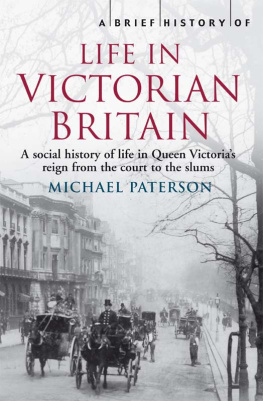Acknowledgements
This book wouldnt have made it into existence without the following people. I will invariably have left out at least one essential person. Its absolutely not intentional and if it helps you feel better, I can assure you that I will lie awake cringing about it in the early hours for the rest of my life. I hope youre happy.
Cressida Downing, aka The Book Analyst ( thebookanalyst.co.uk ), without whom very little of my writing would ever make it out of my head in the first place; The Atkinson museum and art gallery in Southport, particularly Stephen Whittle and Joanne Chamberlain, for allowing me to put their beautiful Lilith on the front cover; Gill Hoffs, who has been an absolute rock and saves my sanity on a regular basis. She writes brilliant books about appalling shipwrecks, you should go buy them all.
Everyone at Highgate Cemetery, particularly Peter Mills, Richard Kuhn, Sarah Tregonning and Nick Powell (let us never forget that very difficult tenth album); the Gladstone family, for kindly inviting me into their home; Karl Davies, Hawarden estate manager; everyone at Gladstones Library, Hawarden, which is my favourite place on the planet.
Alex Butler, who has been an endless and invaluable source of help and information; Joanne Tilly Melia; Helen Stringer; Yvette Caster; Jim Parkyn; Anthony Rhys (), an absolute font of historical medical information; London School of Hygiene & Tropical Medicine, particularly the lovely Glyn Green; the Freedom internet-blocker app, the use of which is the only way I ever get any work done.
Li Zakovics, Lucy Chamberlain I genuinely wouldnt be here without you and I can never thank either of you enough for how youve kept me upright; Jamie Molloy, who talks as much as I do; Susie Cavill and Roi Robertson, my beloved monsters; Mags, for helping with the maths; Sam Cleasby; Jo Austin and Miriam Barber, two of my favourite idiots; Sheena Lees and Emma Barnard, punners extraordinaire; Ruth Douglas; Louisa Burnham; the Hoors, who know who they are; Birgitta Zoutman and Fran Hansen, for keeping me sane even when they werent always managing it themselves; CW; BMC and all who sail(ed) in her.
Scott Wheeldon, who inherited most of the brains in the family even if he doesnt always realise it; my father, who died before I could tell him I was writing this book, but who would have been beside himself with pride and pleasure (whilst also lecturing me on the bits he thought I was getting wrong); my mother, who is amazing and brilliant (although how we have managed to not kill each other yet is beyond me); Speedy Nan, who has been a constant presence throughout; Marilyn Miller; Boo, who always understands; Amelia Benge, for keeping me entertained when I needed it most; everyone who supported, encouraged and loved me during a period of my life that had all the charisma of a liquified squirrel. I adore you all. Yes, even you.
And above all, my wonderful boys, Jaime and Oscar. Thank you for not judging me when I talk about syphilis during dinner and for knowing how to make a decent G&T. I love you both beyond words.
This book was powered by Lavazza coffee and the music of Nick Cave.
Chapter 1
Hustle and Bustle
The Unwritten Rules of Fashion and Courtship
Fashion has played a major role in courtship throughout history. Types of fabric, varying styles, and even the colour of clothing has always been a signifier of someones status in life, and an identifier of what kind of person they are; or, more likely, what kind of person they would like others to think they are. Practicality also comes into the mix. Luxuriously tailored outfits with long, dragging hems not only cost more to create and purchase, they indicate (even now) that the person wearing them probably doesnt have to worry too much about the cleaning bills.
Cultural tastes shift in tandem with the political climate, the economy, and the physical wellbeing of the populace itself. If plague or cholera is ripping through your neighbourhood then personal priorities mean that youre less likely to spend time worrying about which trousers go best with that plaid waistcoat. Equally, when the national culture is more buoyant there is room to experiment and take risks, in clothing as well as finances.
So, what was hot and what was not in Victorian Britain? Before the Industrial Revolution, society was fragmented; the production of commercial goods was localised and lacked extensive variation. But as industry expanded, so did the worldview of the general population. Those with the financial means to do so could travel on the new railway system that was spreading across the country. If people could read, they could find out what was happening elsewhere in the world in the newspapers. Even the illiterate could look at the pictures.
Suddenly, people knew what others were doing, and they also knew what they were wearing. New fashions trickled down through a society that could pick up ideas and make some attempt at recreating them, even if they didnt look quite the same as they had on the advert in the evening paper. Romanticism is often taken to mean literally romantic in the sense that we would understand the word today. But in the early nineteenth century, romanticism still held its original meaning: that of the German Sturm und Drang movement of the late 1700s, proponents of which saw aesthetic value in expressing the power of nature and wild beauty. There is precious little of modern romance to be found in the bleak wonder of true romantic art and literature.
Romanticism had a massive influence on Victorian fashions and what people considered attractive in the opposite sex. Sir Walter Scotts Ivanhoe had been published in 1819 and proved immensely popular with an audience keen to immerse themselves in tales of chivalry and adventure. Credited with inventing the popular image of Scotland, Scott had been responsible for the state visit of King George IV in 1822 the first visit north of the border by a reigning British monarch since Charles Is Scottish coronation in 1633 and in doing so, cemented an enduring image of the Highlands, its people and the kilted national dress.
Novels such as Ivanhoe subtitled A Romance, in case readers didnt quite get the hint and poetry by the likes of Percy Bysshe Shelley and Lord Byron had unleashed in the British populace a love of many things that we might ourselves recognise today as being romantic in the modern sense. Armoured knights on powerful horses, medieval myths brought to life and powerful, bearded men (just waiting to sweep a maiden off her feet and into their manly arms) featured heavily.
This fashion for appearing chivalrous and generally macho was reinforced when Queen Victoria married her cousin, Albert of Saxe-Coburg and Gotha, on 10 February 1840. Not overly popular with either the general public or Victorias own advisors ahead of the wedding (mostly because of his relatively lowly status as second in line to a small German dukedom), Victoria was determined that her country should come to love Albert as much as she did. Ignoring the fact that her husband-to-be had almost zero military experience, two days before the wedding the queen bestowed on him the title of honorary field marshall, the highest rank of the British Army. A bespoke uniform then had to be hastily prepared, in order that Albert might look suitably dashing and authoritative at the ceremony.
Victorias own choice of gown changed the face of the wedding industry more or less overnight. Although white wedding dresses werent unheard of before 1840, they were a rarity; and for good reason. In the days before commercial bleaching processes, white was the most difficult colour to achieve; it was also the hardest fabric to keep clean. Only the wealthiest of brides would have been able to afford both the fabric and the maintenance required for a white dress. Most brides would have simply worn their Sunday best. Even if they were in a position to buy a dress specifically for their wedding, it would generally be one in a practical style and colour, so that it could be worn again after the event. Red was very popular: not only was the colour considered lucky by some, it was also good at hiding stains. In the days before domestic washing machines, clothes would get very grubby around the collars and cuffs, not to mention the dirt that could get onto them simply by walking down the street.











